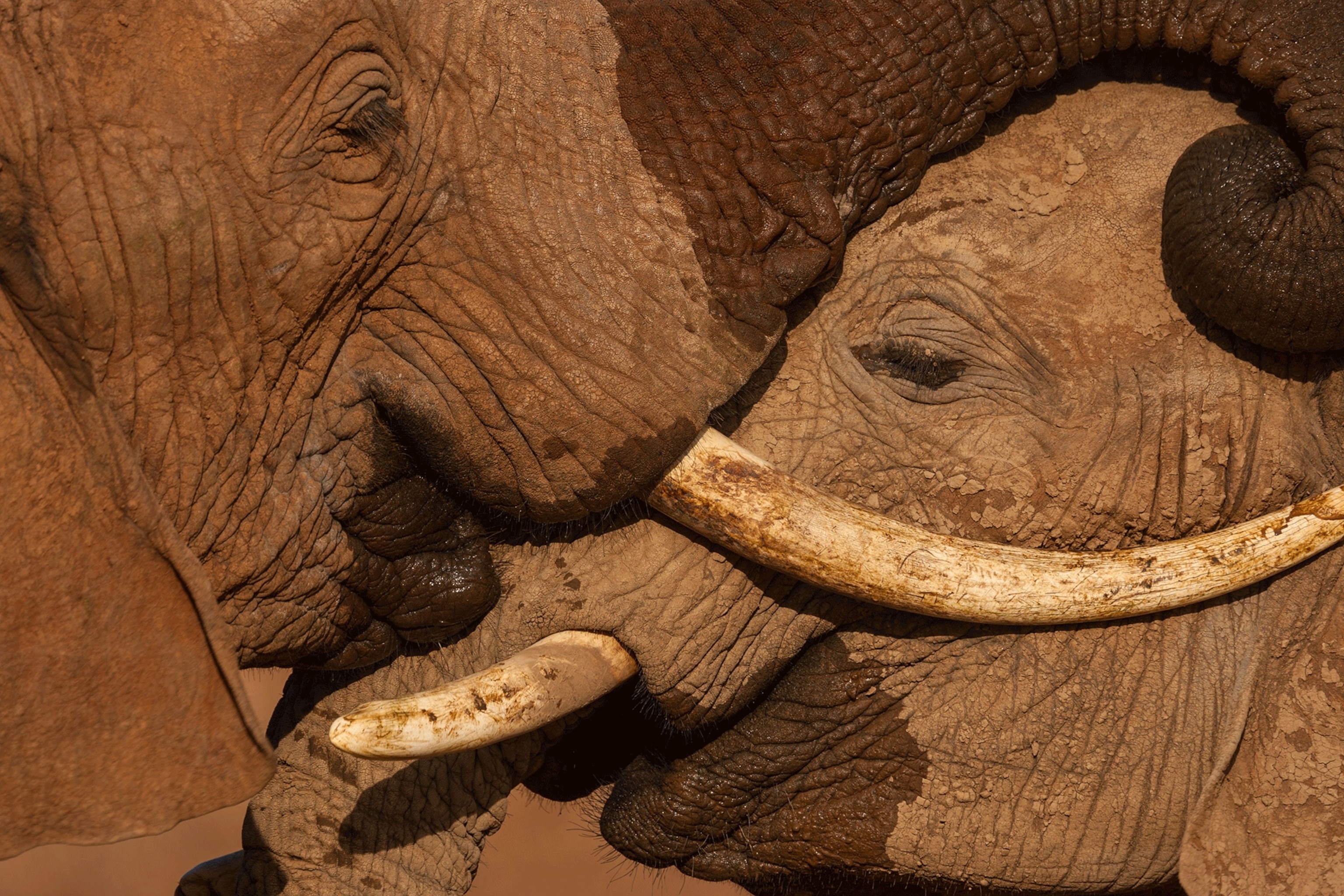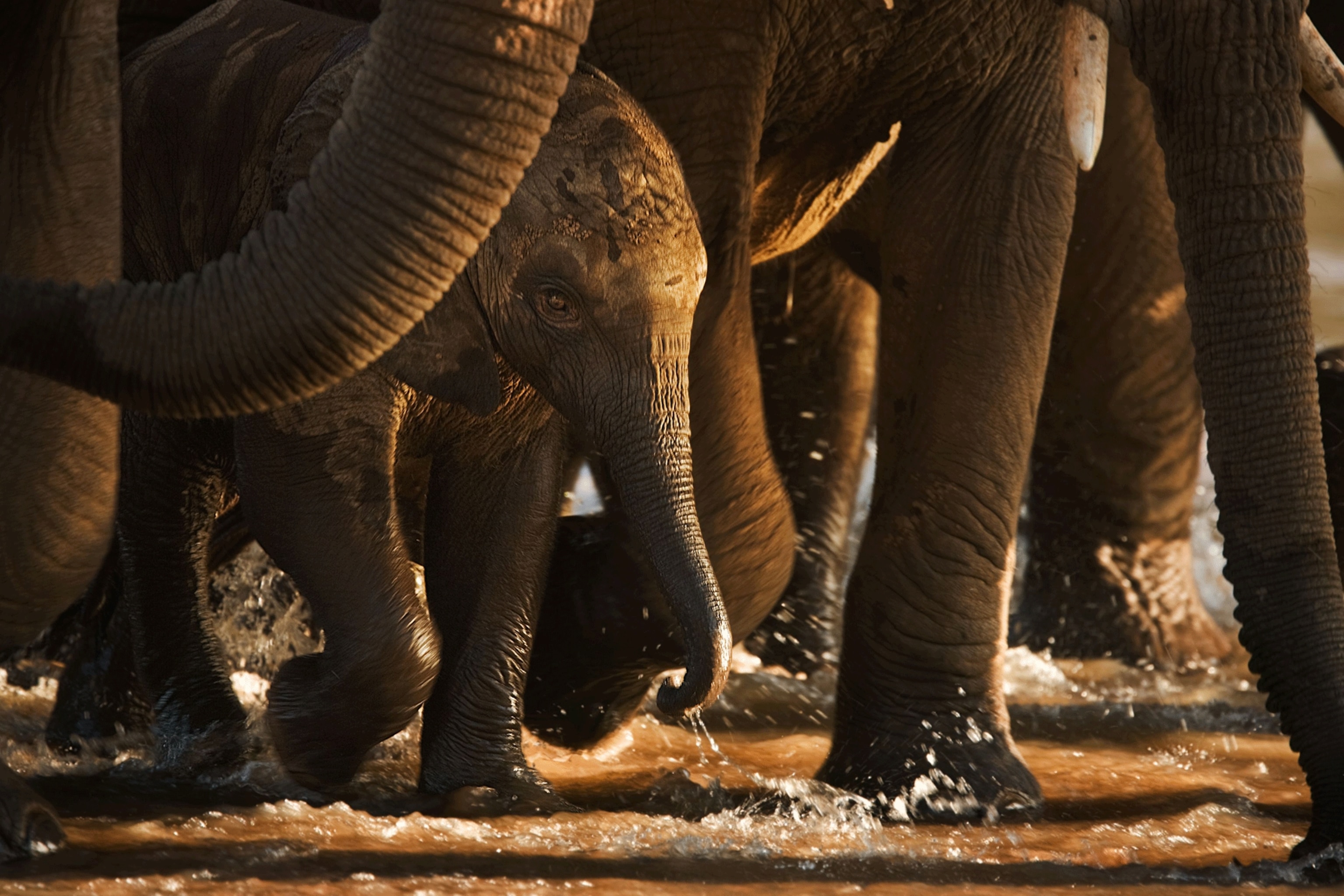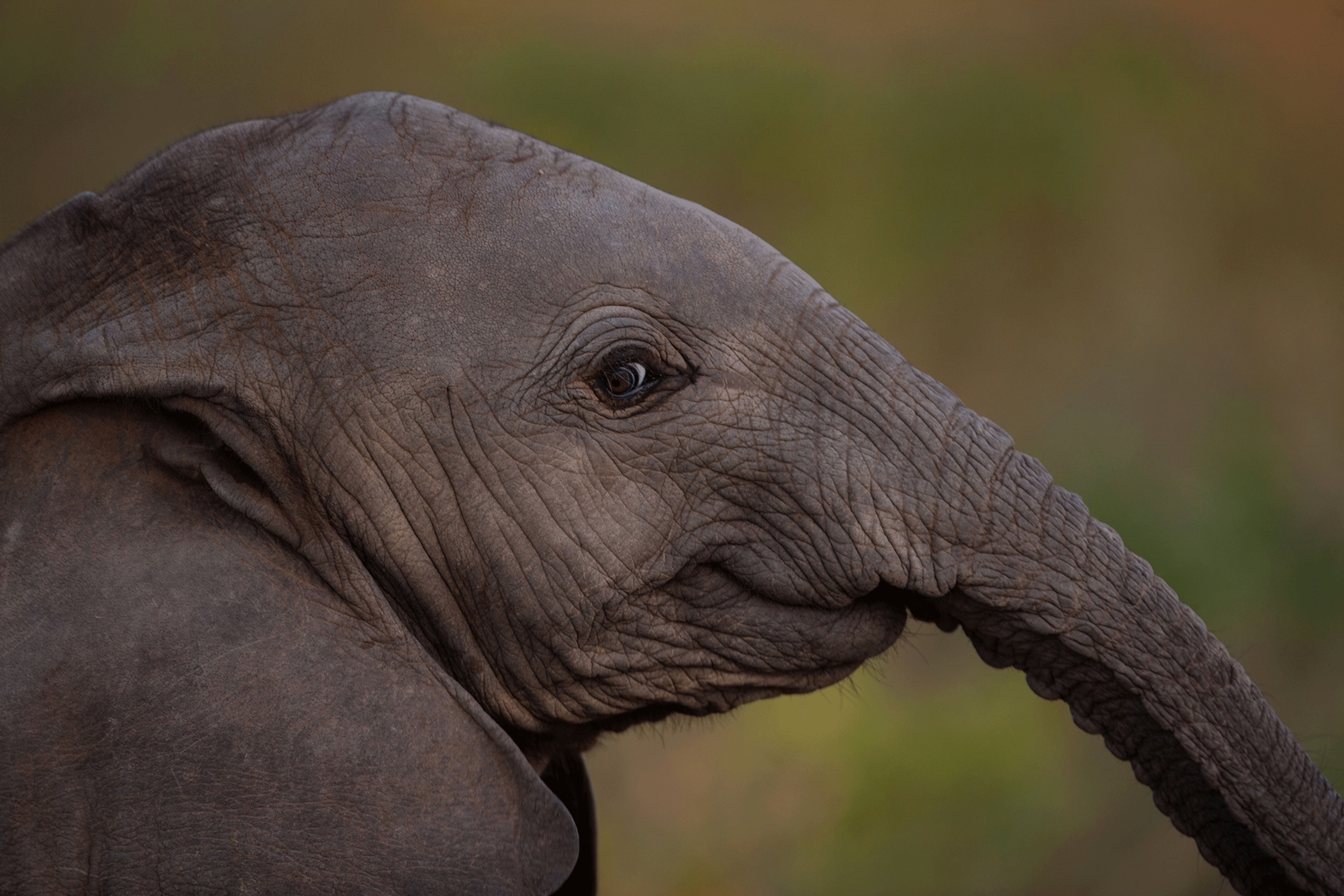
87 Elephants Killed by Poachers in Africa’s ‘Last Safe Haven’
Experts explain how the slaughter could happen in Botswana, which may no longer be the refuge it’s long been thought of.
At least 87 elephants have been killed for their ivory in Botswana in recent months, according to the conservation nonprofit Elephants Without Borders, which discovered the carcasses. It’s a sharp and disturbing increase in poaching for a country that has been considered elephants’ last stronghold in Africa, says Mike Chase, the organization’s director.
“It came as a complete shock that we were discovering elephants that were poached deep within Botswana, within some world-renowned tourist concessions,” he says. “It was completely unexpected.”
Elephants Without Borders was conducting aerial surveys for the Botswana government when observers began noticing carcasses around the Okavango Delta, a UNESCO World Heritage region far from the Namibian and Zimbabwean borders where poaching incidents have occurred more commonly in the country. The organization conducts an elephant census for the government every four years. The most recent census, in 2014, found nine recently killed elephants. This year’s survey, which is only halfway complete, has already found 87.
Botswana’s Department of Wildlife and National Parks today issued a statement saying the Elephants Without Borders claims are “false and misleading.” The statement says only 53 were counted and that many had died from natural causes.
Chase stands by his numbers. “I am an objective scientist, with no political agenda. I am sad that our government has responded in this way.” He says there’s a GPS location for each of the 87 carcasses and that there are multiple witnesses who saw each one. Every flight has four people, including one government employee, and voice recordings from the flights will bear out these findings, Chase says.
Botswana is home to more than 130,000 elephants—about a third of Africa’s savanna elephants—and it appeared to have largely escaped the recent ivory poaching crisis. Continent-wide elephant numbers dropped by 30 percent between 2007 and 2014, according to the Great Elephant Census, an 18-country comprehensive aerial elephant count conducted by Elephants Without Borders that was completed in 2016. Elephants play a critical role in Botswana’s tourist economy, which drew nearly two million international visitors in 2017.
The discovery of these carcasses, which Chase says are mainly of older males with big tusks, could indicate a growing infiltration of organized poaching teams into the country. It comes at a time when humans are increasingly in conflict with elephants—in part because of Botswana’s comparatively large elephant numbers. And it comes just as the government has decided to take weapons away from its rangers.
RANGERS LEFT TO FIGHT ARMED POACHERS WITHOUT GUNS
For decades Botswana has taken an aggressive approach toward poachers. During the late 1980s, former president Ian Khama, then the commander of the Botswana Defense Force (BDF), deployed 800 soldiers to help combat poaching and to assist anti-poaching game rangers. In 2014 Botswana adopted a unwritten shoot-to-kill policy, of debatable legality.
In May, Botswana’s new president Mokgweetsi Masisi decided to disarm the country’s anti-poaching unit. The month before when Masisi was sworn in, he discovered that there was never a legal framework for arming the anti-poaching unit. That’s why their weapons were taken away, says Dereck Joubert, a wildlife filmmaker and National Geographic explorer-in-residence based in Botswana. The Department of Wildlife and National Parks calls it a “corrective measure.”
Disarming the anti-poaching unit has led some, including Chase, to conclude that the recent killings were at least partly linked to the decision. While shoot-to-kill has always been a controversial anti-poaching strategy, giving rangers weapons has not.
“I find it very difficult that any government would send its citizens out to the front lines to fight highly organized criminal networks who are armed to the teeth without weapons,” Chase says. “This is the largest elephant range left on the planet. It is very remote and difficult to access, and expecting the BDF [to handle it on their own] is not fair.”
Still, Joubert finds it hard to believe that the disarming of the unit was the cause of these recent elephant killings. “To say the poaching occurred because the weapons were taken [from the anti-poaching unit] away doesn’t make any sense. There are still 800 armed BDF out there,” he says.












Goemeone Mogomotsi, a legal officer at the University of Botswana who has studied the country’s anti-poaching strategies, called the decision to disarm the anti-poaching unit “unfortunate and regressive.”
In a 2017 paper by Mogomotsi and his colleague Patricia Kefilwe Madigele, the co-authors argue that Botswana has become a haven for elephants precisely because it armed its game rangers and deployed the military to conservation areas. (They also argue that Botswana’s shoot-to-kill policy helped as well, though this contention is strongly disputed by other scholars and is opposed by human rights advocates.)
WARNING SIGNS?
The cause of the poaching of these 87 elephants is likely more complex than just the rangers’ disarmament, says Vanda Felbab-Brown, a crime and security expert at the Brookings Institute.
“The announcement [that rangers would be disarmed] probably significantly contributed to temptation by poachers to intensify hunting. But I think it’s simplistic to portray this as the sole cause,” she says.
Poaching incidents have been increasing in Botswana during the past two years, she says, both at the community level and the professionalized level. She and Chase both make the point that as elephants have nearly been wiped out in neighboring countries, trafficking networks are likely moving into Botswana, where there are more animals to hunt.
Felbab-Brown also posits that Botswana’s 2014 hunting ban may have led to more poaching. Communities that previously benefited from the trophy hunting industry and related tourism services lost employment opportunities and sources of income when the ban went into effect. Photographic tourism didn’t increase enough to make up the difference, according to recent research by Joseph Mbaiwa at the Okavango Research Institute, at University of Botswana.
Communities also lost an important source of game meat, and the lack of hunting meant more more wildlife on village doorsteps. That has led to more encounters between people and elephants, thereby increasing the incentive to kill encroaching animals illegally. These factors combined to cause people living in rural areas to develop more negative attitudes toward wildlife, according to Mbaiwa, and that in turn may have spurred an increase in poaching.
Joubert disagrees. He says that when hunting was allowed, concessions were only occupied five months out of the year, leaving those areas especially vulnerable to poachers during the other seven months. With photographic tourism, the concessions are occupied year-round.
The government is now reviewing the hunting ban.
DEMAND REMAINS STRONG
The demand for elephant ivory comes mainly from Asia, where it’s seen as a status symbol by some. Ivory is carved into tusk-size sculptures, figurines, chopsticks, jewelry, and a myriad of other items. While the international trade in ivory has been banned since 1990, the domestic trade in China remained legal until the end of 2017.
China’s landmark decision to close its ivory market was celebrated around the world. But, says Felbab-Brown, the fact that these 87 elephants were recently killed in a place like Botswana seems to indicate that the ban hasn’t had the immediate effect many expected. “The ban has been effect for nine months, and this is still happening. It means there is still a lot of flow somewhere,” she says. “The Chinese market has not dried up.”
Hong Kong and Japan, both of which have legal domestic ivory markets, remain major destinations for illegal ivory, as does China and the United States.
“It’s a bleak time in elephant conservation right now,” Chase says.
Joubert cautions against implying that there’s a poaching free-for-all in Botswana right now. Still, he says, “Even if one elephant has been killed, it’s one elephant too many. We have to mobilize. We have to make sure it doesn’t escalate.”
You May Also Like
Go Further
Animals
- Soy, skim … spider. Are any of these technically milk?Soy, skim … spider. Are any of these technically milk?
- This pristine piece of the Amazon shows nature’s resilienceThis pristine piece of the Amazon shows nature’s resilience
- Octopuses have a lot of secrets. Can you guess 8 of them?
- Animals
- Feature
Octopuses have a lot of secrets. Can you guess 8 of them? - This biologist and her rescue dog help protect bears in the AndesThis biologist and her rescue dog help protect bears in the Andes
Environment
- This pristine piece of the Amazon shows nature’s resilienceThis pristine piece of the Amazon shows nature’s resilience
- Listen to 30 years of climate change transformed into haunting musicListen to 30 years of climate change transformed into haunting music
- This ancient society tried to stop El Niño—with child sacrificeThis ancient society tried to stop El Niño—with child sacrifice
- U.S. plans to clean its drinking water. What does that mean?U.S. plans to clean its drinking water. What does that mean?
History & Culture
- Beauty is pain—at least it was in 17th-century SpainBeauty is pain—at least it was in 17th-century Spain
- The real spies who inspired ‘The Ministry of Ungentlemanly Warfare’The real spies who inspired ‘The Ministry of Ungentlemanly Warfare’
- Heard of Zoroastrianism? The religion still has fervent followersHeard of Zoroastrianism? The religion still has fervent followers
- Strange clues in a Maya temple reveal a fiery political dramaStrange clues in a Maya temple reveal a fiery political drama
- How technology is revealing secrets in these ancient scrollsHow technology is revealing secrets in these ancient scrolls
Science
- Soy, skim … spider. Are any of these technically milk?Soy, skim … spider. Are any of these technically milk?
- Can aspirin help protect against colorectal cancers?Can aspirin help protect against colorectal cancers?
- The unexpected health benefits of Ozempic and MounjaroThe unexpected health benefits of Ozempic and Mounjaro
- Do you have an inner monologue? Here’s what it reveals about you.Do you have an inner monologue? Here’s what it reveals about you.
- Jupiter’s volcanic moon Io has been erupting for billions of yearsJupiter’s volcanic moon Io has been erupting for billions of years
Travel
- Follow in the footsteps of Robin Hood in Sherwood ForestFollow in the footsteps of Robin Hood in Sherwood Forest
- This chef is taking Indian cuisine in a bold new directionThis chef is taking Indian cuisine in a bold new direction
- On the path of Latin America's greatest wildlife migrationOn the path of Latin America's greatest wildlife migration
- Everything you need to know about Everglades National ParkEverything you need to know about Everglades National Park







